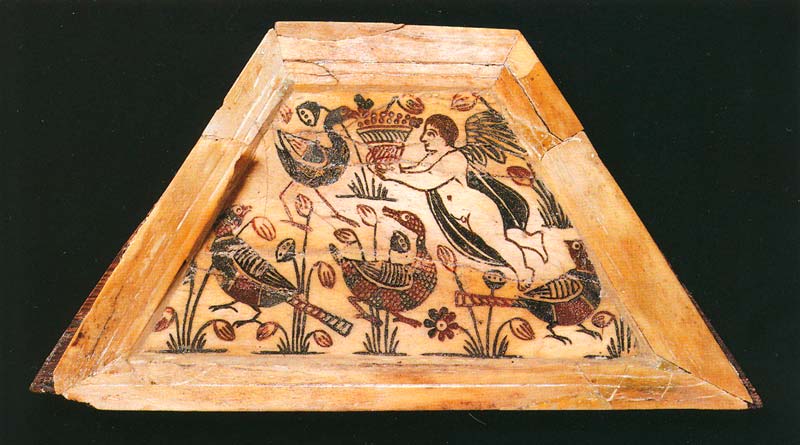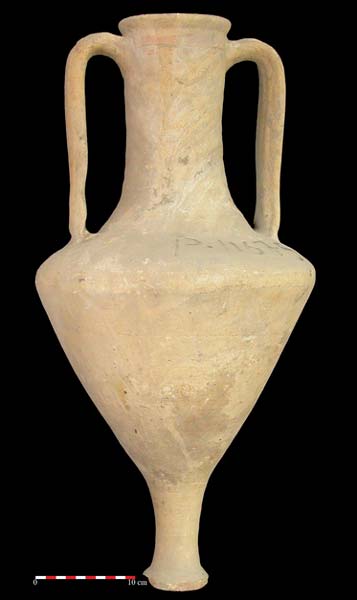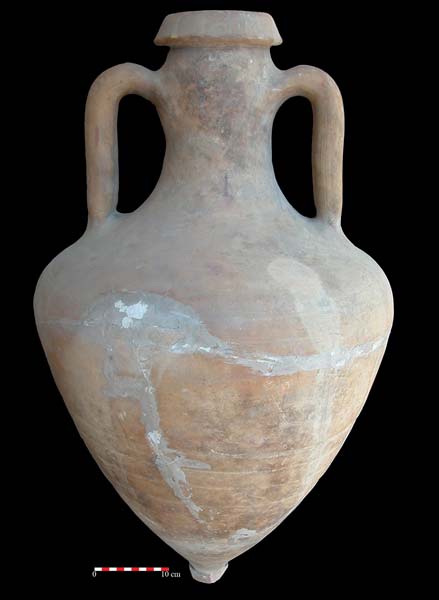Craftmanship in ancient Alexandria
Ceramic finds are an essential tool for reconstructing the complexity of production and trade systems in antiquity and for accurately dating archaeological layers. Consequently, CEAlex has endeavoured from the outset to create a typo-chronological repertoire of ceramics discovered in excavations, to determine whether they were locally produced or imported, through macroscopic examination and archaeometric analysis, and finally to propose a dating of forms, types and manufacture, using stratigraphy and other artefacts discovered in association. Several volumes concerning ceramics have been published since 2015 and other studies, either by excavation site, by category of material or by period, are currently underway.
Analysis of ceramic material from CEAlex excavations in the city centre and outside Alexandria, from the Italian mission on Nelson Island, and from the French mission in the necropolis of Plinthine, has demonstrated the manner in which ceramic craftsmanship commenced within the new capital and its chora, between the end of the 4th and the middle of the 3rd centuries BC. It has also shed light on and nature of imports. Furthermore, a selection of ceramic assemblages from the Cricket Ground site has provided a chronological sequence covering the 3rd and 2nd centuries BC at quarter-century intervals, illustrating the evolution of Alexandrian pottery characteristics.
The extensive backfill that formed the foundation of the Caesareum provided invaluable information for the end of the Hellenistic period and the beginning of the Augustan era on local production (alluvial and limestone) and on the supply of imports to Alexandria (46% for fine and common ware; almost 80% for amphorae).
A special category of goblets with painted decoration, the fragments of which were collected mainly from the surface of the city’s necropoleis by the collector Lukas Benaki in the 1930s and are now kept at the Greco-Roman Museum in Alexandria, the British Museum and the Benaki Museum in Athens, has come under detailed study focusing on date and iconography, both of which are poorly known or variously interpreted. Examination of similar fragments from CEAlex excavations has confirmed that this type of vase dates from the Hellenistic Period (2nd-1st century BC), while meticulous study of the motifs has identified scenes of procreation, childbirth and banquets, combined with depictions of abundant nature, which set these vases in a religious context celebrating life and rebirth.

Two new tools have been created to improve our understanding of ancient trade through the study of amphorae. It was traditional in the Greek world until the end of the Hellenistic period for every wine-producing city to stamp marks onto the handles of its amphorae, naming the manufacturer and the authority of the city. For the city of Rhodes, the names of more than 500 manufacturers and more than 300 eponymous archons are known. Drawing on the thousands of Rhodian stamped handles discovered in excavations all around the Mediterranean and beyond, a lexicon of the stamp dies has been compiled. It is available in a searchable online database, and part of it has already been published in four printed volumes [1]. Stamp dies from other cities, such as Cnidus, Cos and Chios, are currently being classified. At the same time, the catalogue of 457 complete amphorae held in the Graeco-Roman Museum provides concrete evidence of Egyptian production and the city’s commercial network from its foundation until the 7th century AD.
Greek amphorae from the end of the 4th and the 3rd century BC © Archives CEAlex
Since 2015, two other forms of craftsmanship have featured in richly illustrated general public volumes in the Antiquités Alexandrines collection. The first offers a panorama of bone and ivory work in Alexandria from the Ptolemaic Period to the first centuries after the Arab conquest in 642. Supply sources, styles and traditions, workshop remains, manufacturing techniques and the many uses of this material, elements of furniture and caskets, jewellery, tools, games, dolls, etc., are all examined, as well as the remarkable spread of this Alexandrian production throughout the medieval West.

The second publication presents a selection of 70 mosaics and pavements from Alexandria and Graeco-Roman Egypt. Generally little known, and more often than not unpublished, these works are illustrated here in full colour, some for the first time. This is the first overview of Egyptian mosaics and pavements produced between the end of the 4th century BC and the 6th century AD. The aim of this study is to provide a better understanding of the artistic and craft production of a form of decoration that played an important role in the living environment of antiquity, and to highlight the Alexandrian mosaicists who were at the forefront of creativity in the Hellenistic period.

[1] G. Cankardeş-Şenol, Lexikon of eponym dies on Rhodian amphora stamps. vol. 4, Eponyms Τ to Χ, ÉtAlex 39, 2017, ISBN 978-2-11-139025-6.






